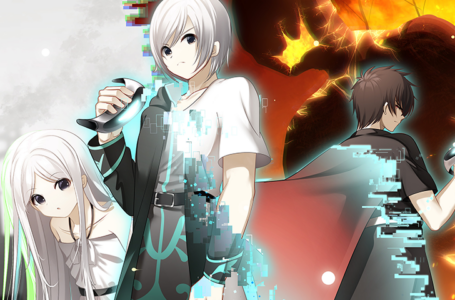Taking a look at EPHEMERAL – Fantasy on Dark
Since we have had the exciting news of plenty of upcoming otome games releasing later this year and within 2022, I thought that it would be worthwhile spending some time looking back on a few otome titles that are already available on the Switch.
So where do we start with the ever expanding library otome game ports on the Switch? Well, one game happens to frequently catch the eye of players exploring the otome tag due to its simply gorgeous visuals and character designs: EPHEMERAL – Fantasy on Dark.
It is a port of a Vita game that released in 2018, but which was originally on mobile devices. It was developed by HuneX and dramatic create, who most of us will be familiar with for their other only western release Steam Prison — which just happens to be one of the better regarded and well-recognised modern otome games.
The game is playable for free on mobile devices using a ticket system, and its price on both Steam and Switch is due to the added content of high definition event scenes, voice acting across the whole game with the exception of the heroine, and cast free talks — which are unfortunately not subtitled on either platform.
It released on the January 21, 2021 for Switch, and was previously released on Steam in September of 2018. The Steam version saw added translations and updated resolution of full HD over the mobile original. From what I can gather by playing the Switch port, it has been improved from the Steam release; the latter had a somewhat mixed reception due to its less than stellar translation. While the game still has issues with its translation on the Switch — typos, grammatical errors, and moments of wrongly implemented text formatting — it has had an upgrade and is far more readable compared to player screenshots of the Steam version.
While the mobile version gates off your progress with its ticketing system, it at least allows you to make some progress for free — and it’s helpful to know what you will be getting into with a game like this, as it might save you some disappointment. After all, the retail price for the Switch version is a hefty £28.79 (30% off at the time of writing, and there’s a free demo – Ed.) despite the translation issues and short length.
So, is EPHEMERAL still an otome worth adding to your collection? Let’s take a spoiler-free look and find out!
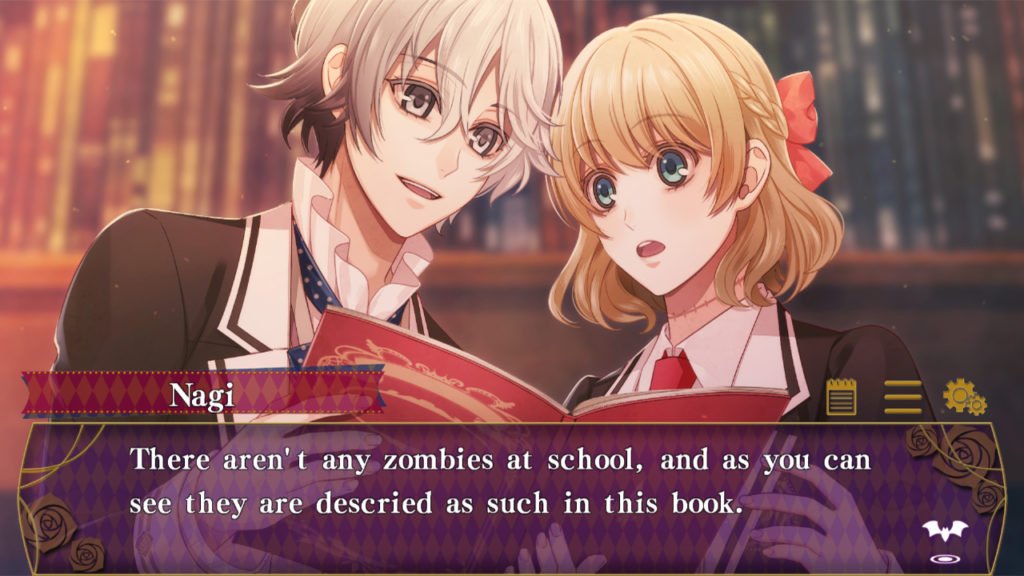
All about that system
The game is set in a dark fantasy world where people are viewed in a hierarchy depending on the monster race that they are born into. We play as Cloé, a zombie who has only ever known the village she was born and raised in — a settlement that homes only her kind. She is invited to enrol in a diverse and prestigious school where she will learn more of how her world works, what other monsters inhabit it — and most importantly, love.
EPHEMERAL is a very short otome, clocking in at less than 8 hours to clear both routes of each love interest, with a 10-minute prologue — or even less if you happen to be a quick reader.
The game is split into two sections for each of the four love interests: the “romance” route, and the “lovers” route. It’s similar to how Diabolik Lovers progressed; the “lovers” segment acts as a sort of condensed fandisc, similar to what BUSTAFELLOWS does with its “side B” storylines. In other words, you get the best of both worlds here in regards to the progression of a romantic relationship in an otome game.
When it comes to its overall quality of the title as a Switch port, the game’s progression and UI make its mobile origins quite clear.
The default button scheme is not a regular setup for a visual novel on the Switch, making for some initial awkward fumbling in the menus during gameplay, but it’s easy enough to adjust to.
The opening tune and accompanying video is very well presented and appealing on both the eyes and ears, making the title appear very high budget. It has an overall dark purple and black tone theme to it that captures the Gothic and Halloween vibes the game is going for. And we all know we would simply love more commercial otomes based around darker themes and festivities.
While the menus are serviceable, a major nitpick of mine whilst frequently entering and exiting out of the game is the repetitive spoken dialogue of the love interests during menu selections — this cannot be cut off, so you have to wait for them to talk every time you select something.
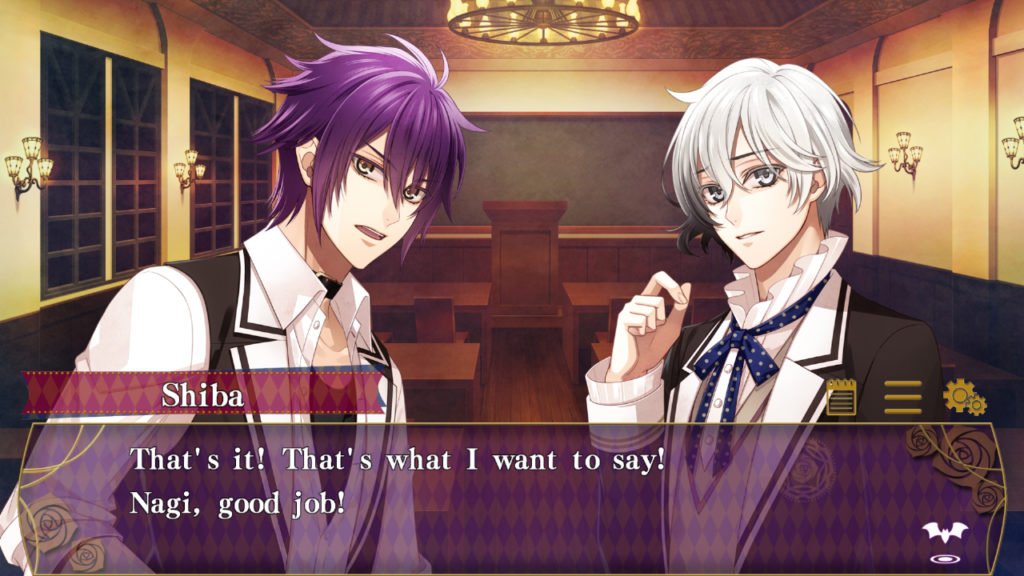
The game’s sense of progression is where it hits a wall — and this is probably the biggest issue of the game. A major amount of its chapters play out as simple and short scenarios, depicting a moment of bonding between the heroine and the selected love interest after a considerable amount of time has already passed by since their last encounter. The relationship building is near non-existent due to this story structure, and only ever feels believable and well-paced in Nagi’s route due to how significant its events are to both of these central characters.
While this condensed story is expected for a mobile game intended to be played in short bursts, any player looking for an experience similar to that of other premium otome titles priced around the same as EPHEMERAL will end up feeling dissatisfied due to how short the romance time is — and how inconsequential the majority of its routes are to the already loose main plot threads and sense of worldbuilding.
The game’s music is composed by Maruyama Kimiyoshi of the musical unit Project Lights. While his work credits are commendable, such as for being a part of the Ozmafia! and Steam Prison OST, the limited scope of EPHEMERAL brings down the appeal of its otherwise serviceable musical tracks.
The soundtrack is extremely limited at only 12 songs, and this feels especially apparent when considering how small the game’s scope already is in terms of locations. The same few songs are always played for the same “comedic” or “emotional” moments, and end up feeling overused. The main issue is how repetitive its few tracks end up being due to the game’s length — this would have been less of an issue on mobile devices by virtue of the short play sessions most people would have enjoyed.
But let’s end this section on a positive note and admire the outstanding artwork provided by the artist Nagahara Kinami, who does not seem to have worked on many other titles other than this game’s sequel Miniature Garden, and Secret Crush on mobile.
While backgrounds are simple and plain, sprites and CG artwork always take up the limelight, and they really “pop” due to how gorgeously illustrated and designed they are.
The boys
Scenario writer Hirano Hiro only appears to have worked on both EPHEMERAL games, and interestingly enough, has been noted to favour characters that are haraguro (meaning putting on a fake “nice and friendly” persona) and yandere (which we have discussed before). And it is quite obvious, considering the love interests of this game, that they take a fancy to such characters.
Let’s take a look at each of the boys’ routes, in the recommended order that they are played through.
Shiba is voiced by Kondou Takashi (Sakamaki Subaru from Diabolik Lovers, Mahoutsukai from Dot Kareshi and Akatsuki from Nise no Chigiri), and is a werewolf. His route touches upon the major theme of discrimination thanks to his… less than ideal true form.
It is unfortunate that his last few chapters in the “lovers” route squanders everything positive about his character, but the majority of his route is a wholesome time with a wanko boy (though remember, if you prefer catboys, NEKOPARA Catboys Paradise has you covered).
It is a great start to the game, since Shiba is mostly a lovable dork who errs on the tsundere and genki side whilst being overly adorable due to also being a bit of a block head. The pairing of Shiba and the heroine together makes for an awkwardly cute coupling, since neither are the brightest of monsters.
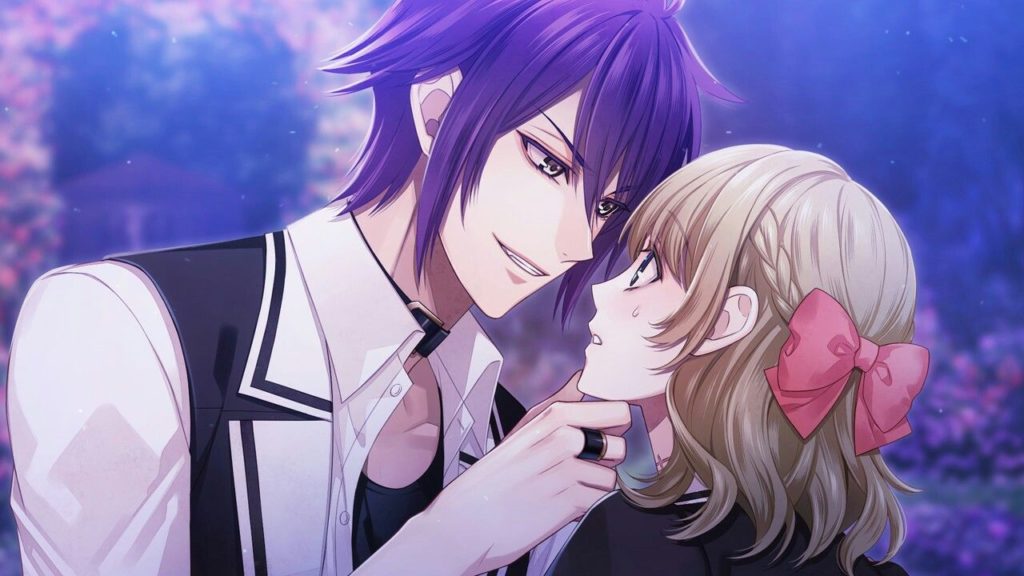
Nagi is voiced by Horie Shun (Himuka from Dairoku: Ayakashimori and Aoi from Ayakashi Koimeguri) and is the invisible man. The parallels between our heroine and Nagi not only make them a very solid “best pairing” pick of the bunch, but Nagi’s route is the most eventful and emotional.
It is the only route to touch on our heroine’s backstory, and gives us an unconventional bittersweet good ending. The archetype of Nagi himself is also uncommon, since he initially appears to be a typical shota, but he has the personality of an academic and quietly spoken love interest — simply put, he is not the genki/energetic shota type.
Next up is Ray, who is voiced by Okitsu Kazuyuki (Shinjou Saito from Fashioning Little Miss Lonesome and Kyrie from Ozmafia!!) and is a vampire. While both Nagi and Shiba are mostly inoffensive, the other half of the cast, including Ray, might not impress many of EPHEMERAL’s players — at least at first.
As a vampire, Ray is the second-highest ranking monster within the game’s hierarchy, and perpetually has an air of superiority and arrogance to him against everyone else — even in his opinion and treatment of the heroine, who he takes an interest in only for her appearance.
For a character as cocky and eye-catching as him, his route is extremely typical considering his personality — even featuring a full-on, rabid fan club of girls requesting that he suck their blood (Amnesia Deja vu, anyone?). While his romance route was a letdown due to both the scenario being cliché and the fact it showcased somewhat questionable actions by its love interest, Ray’s character development seen in his “lovers” route makes his second half perhaps the most enjoyable of the lot.
Finally we have Natsume, voiced by Toyonaga Toshiyuki (Orlok from Piofiore and Semi Tokitsugu from Dairoku: Ayakashimori). He is a mummy, and his route should be the final one played due to how much exposition and information dumping is provided here concerning the wider world of EPHEMERAL and our heroine.
He is initially reserved and cold, appearing as the tropey white-haired, mysterious type — think Kai from Collar x Malice. The game delivers on the intrigue of Natsume as his true side is revealed in his route; some of the things he comes out with towards our heroine would make even the most challenging of love interests blush. You will either love him or hate him, but regardless, the plot concludes nicely when closing out the game with his route.
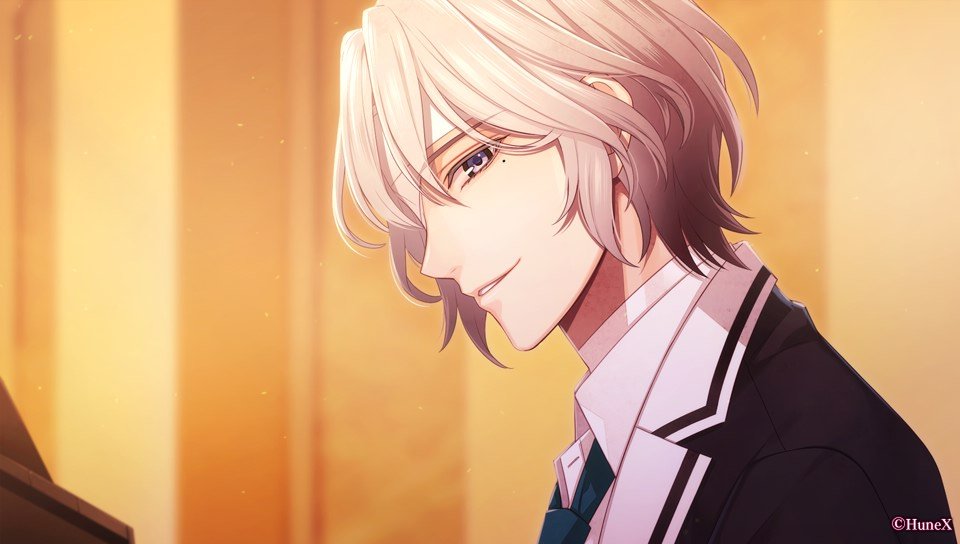
The plot
Now we get to somehow the best and the worst part of the game – its story. EPHEMERAL, as a short game, has an extremely contained and condensed plot.
Our heroine, Cloé, is a zombie, the lowest-ranked monster in the game’s hierarchy. The theme of discrimination is an interesting parallel of our real world that is played around with in this dark fantasy setting, and it’s often the catalyst of the characters’ development and arcs.
Each narrative thread is touching in its own way, with the boys dealing with certain issues relevant to their upbringing and current standing in its systematic world and unfair society — be it due to low self-esteem, elitism, trauma or existential crisis.
The character development arcs are present, but they fail to be anything more than a personal journey for the characters to start and finish neatly, since the overarching plot has nowhere else to go due to the tight time constraints.
And this is a true shame when the game manages to reach the heart-wrenching heights of Nagi’s route at its best, the many interesting plot threads in Natsume’s. It is ultimately unable to expand upon its established world, lore and setting despite the potential being there. It is a greatly intriguing and potentially complex idea concerning the hierarchy and societal expectancies of the monster races — it just doesn’t quite give us enough to be truly satisfying.
Despite the information dumps in some of its routes, the story still manages to contain very noticeable plot holes despite its shortness. The interesting lore is not explained enough, making the revealed information feel unnecessary as one-off facts — or in some cases even seemingly going completely against elements already set up and established elsewhere in the story.
It’s unfortunate, as the worldbuilding hints at being extremely interesting, but is let down by the plot being too contained, with too many details seemingly at odds with one another.
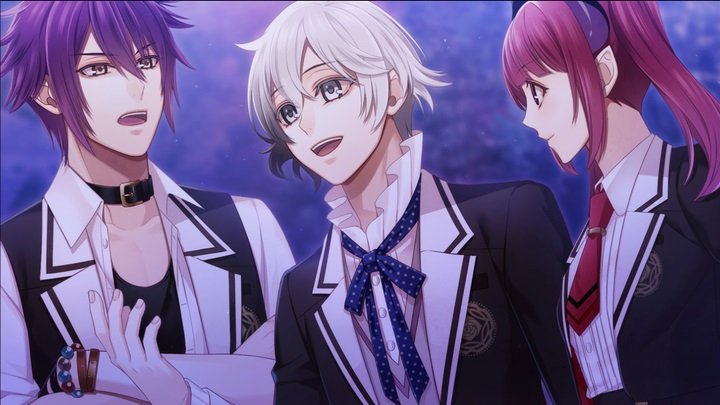
On a more positive note, much like many other otomes, the game capitalises on its focal friend group consisting of the heroine, the love interests, and even a female best friend supporting character. It provides humorous dynamics and conversations between its core cast of characters — and especially so with the fairly underrepresented positive and sweet relationship between the heroine and her best friend Erika.
Speaking of the heroine, Cloé is understandably naïve due to her sheltered life, so much so that even the topic of love is something she is unfamiliar with, making her seeming denseness about the subject all the more palatable. She also happens to be quite literally braindead as a main character — because she is a zombie. This fact provides the majority of the game’s humour through how she awkwardly and unknowingly tackles problems — usually due to her misunderstanding situations.
Its endings are also very entertaining for not going by the grain; they’re not necessarily “bad” or “good”. Even a few supposedly “good” endings leave our characters on a somewhat sour note, making some routes highly emotional and unexpectedly bittersweet, with players feeling invested in its characters. Admittedly this only applies to one or two out of the entire cast, but the game manages to avoid being entirely predictable due to how some of the endings leave us feeling conflicted and emotionally caught off-guard.
Verdict
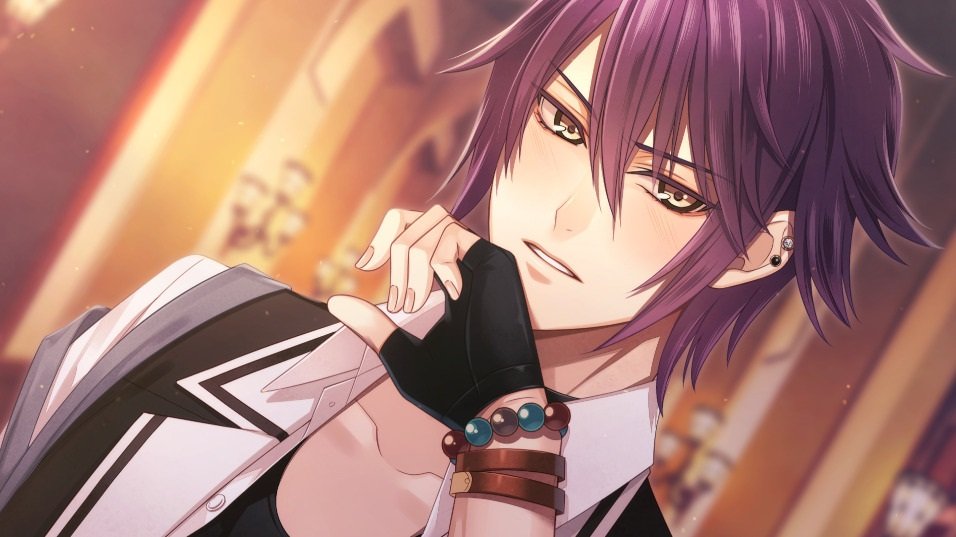
Overall, there are a lot of both positive and negative things to say about about EPHEMERAL.
When we have other otome games available on both Steam and the Switch that have a similar retail price to EPHEMERAL, such as Code Realize and Steam Prison, it is no wonder as to why the title has had a somewhat lacklustre reception to date. But does it make the game “bad” just because there are better options out there? I would say no.
EPHEMERAL is ultimately not an otome game players will be coming back to after completing it, unlike many other more popular titles — but what it does provide is a selection of short bursts of fantastical romance scenarios that we can experience after we have consumed every other possible title within the genre. It’s short, sweet and gives us what we are looking for — blushing bishounen monsterboys.
Maybe it is time to give one of Opera House’s infamous Switch games a go? For now, this one is a solid “wait until a sale” recommendation — and even then, only try to grab it if it retails at less than £20. But I would warn you — go for the Switch version by preference!
Join The Discussion
Rice Digital Discord
Rice Digital Twitter
Rice Digital Facebook
Or write us a letter for the Rice Digital Friday Letters Page by clicking here!
Disclosure: Some links in this article may be affiliate links, which means we may earn a small commission if you make a purchase after clicking on them. This is at no additional cost to you and helps support Rice Digital!
- Sigh of the Abyss: Shadow Bonds – Prologue Review - October 7, 2023
- Is She The Wolf? is wickedly addicting TV - October 6, 2023
- The steady consumption of Slow Damage - October 5, 2023






